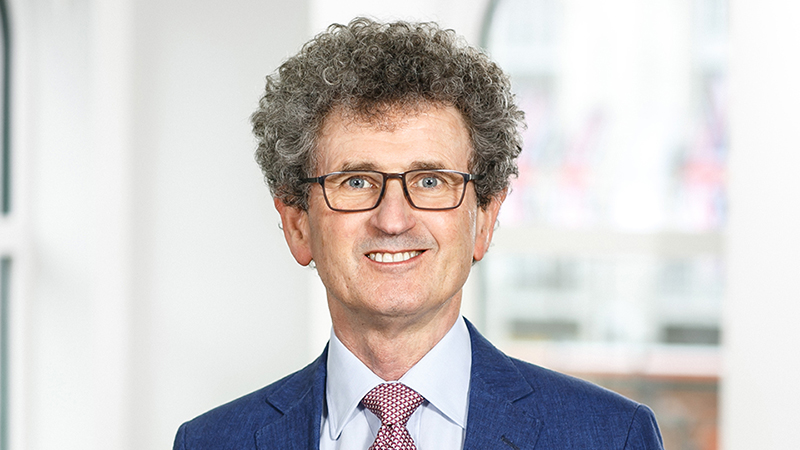Of the 4,000 funds that are members of the Investment Association (IA), allocated across more than 50 categories, the specialist sector is home to about 130 constituents. In 2021, the IA reviewed the global and specialist asset classes with a view to creating more granular and relevant classifications to facilitate more meaningful comparison and help investors and their advisers make better informed decisions.
From September 2021, new regional, sector and asset classes were created, such as Latin America, healthcare and infrastructure, as well as commodities and natural resources. Consequently, the specialist category was cleaned up and went from about 330 funds to the current 130. This was a welcome and necessary development.
A broad church
The specialist sector remains an exceptionally diverse ‘catch-all’ cohort that incorporates single-country funds, absolute return, sector funds, targeted return, fixed income, money market and commodities, among others. It is noteworthy that passive penetration, which is ubiquitous and growing rapidly elsewhere, is entirely absent here.
The IA sector classifications are rules based, and presided over by the sectors committee, who regularly review the definitions to ensure they remain relevant and to check that the constituent funds continue to meet the inclusion criteria.
In the case of the specialist sector the inclusion criteria set out by the IA is: funds that have an investment universe not accommodated by the mainstream sectors. Performance ranking of funds within the sector as a whole is inappropriate, given the diverse nature of its constituents.
To put this into sharper focus, and to illustrate the variety within the sector, mapping across the constituent funds leads to inclusion in upwards of 50 Lipper classification categories, including around 18 mixed asset funds with various objectives from aggressive to conservative, 14 bond/money market funds, 10 single country offerings, largely made up of Korean and Russian funds, nine emerging market equities, seven gold and precious metals products and four biotech funds, resulting in a very broad church.
While the specialist category is somewhat of a curate’s egg, it is home to significant investor assets. At the end of June, the unweighted average size of the funds was around £940m and total invested across the sector was £118.7bn, although the top 10 largest vehicles accounted for two-thirds or £78bn of the funds under management.
The sector is dominated by Allianz Income and Growth at over £38bn in size or around a third of the total assets within the sector.
At the opposite end of the spectrum there are 24 funds that are sub-£50m in size, accounting in aggregate for £510m of assets and with an average unweighted fund size of £21m.
Given the focus on niche and arguably less mainstream investment themes this tail of smaller funds is perhaps not surprising. The arguments for and against smaller funds are nuanced, though fixed costs can be a negative drag on a smaller pool of assets, and they may also be unappealing to larger investors that tend to avoid overly high ownership levels within funds.
Macro influence
Given the sheer breadth of strategies contained within this asset class, the macro environment has wildly differing effects on the performance of the various constituents.
A more benign interest rate environment might, for example, be a tailwind for the bond, infrastructure, stylistically growth-orientated or long-duration assets and a headwind for the short-term money market funds.
Meanwhile, higher inflation and firmer energy and commodities prices act as a fillip for those funds investing in precious metals, energy and wider resources.
Recent seismic changes in the geopolitical landscape (ie Russia/Ukraine) and the unwinding of low interest rates as higher inflationary pressures emerged, have showcased the magnitude, thematic range and diversity within the specialist sector and its potential appeal to investors.
The heterogeneous nature of this cohort is illustrated in the extreme divergence in volatility seen through the sector over the past three years. Those funds exposed to gold-related assets and emerging European assets have, not surprising, been subject to extremely elevated levels of volatility, in the order of two to three times the magnitude of what might be expected from broad global equities.
At the other end of the spectrum, money market, and some absolute return-type strategies have exhibited exceptionally low levels of volatility as measured via their three-year standard deviation.
The resultant constituent three-year performance also exhibits significant dispersion from the top-performing fund’s return of 83% to the worst performer at -64%, a difference of 147%. Comparing this with a more homogeneous category such as IA UK All Companies, the difference between the best- and worst-performing funds (+41 and -36%) is 77 percentage points.
Since the IA review in 2021, the specialist sector has shrunk in terms of number of funds but remains extremely heterogeneous which, as the IA itself states, limits the use of the specialist category as an effective comparator peer group.
Read David Holder’s funds to watch by assets under management, three-year performance and newcomers in September’s Portfolio Adviser magazine










